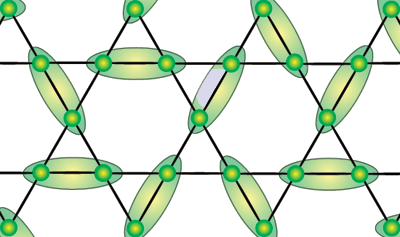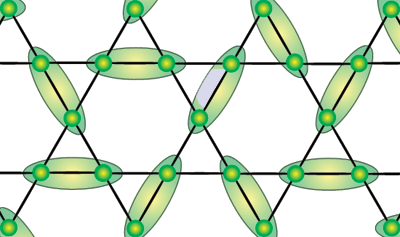Pool of Candidate Spin Liquids Grows
At low enough temperature, the spins in a magnetic material will typically “freeze” in a particular arrangement. However, certain materials have lattice structures that interfere with, or frustrate, this spin freezing even at absolute zero. Physicists proposed the existence of these quantum “spin liquids” 40 years ago, but experimental evidence emerged only in the last few years. Now, a team of researchers has identified a new spin liquid candidate. As described in Physical Review Letters, the material has unique features that could provide another avenue for studying spin liquid physics.
The simplest model of a spin liquid is an antiferromagnet with a triangle-shaped lattice: Interactions between the ions favor antiparallel spins, but the triangular geometry forces two spins to point in the same direction. This frustration causes the spins to constantly fluctuate between different arrangements. The resulting liquidlike state may have relevance in high-temperature superconductivity and future quantum computing technologies. But other than a naturally occurring mineral called herbertsmithite, which has a kagome lattice of corner-sharing triangles, spin liquid behavior hasn’t been observed in any actual materials.
In 2011, chemists synthesized a new kagome antiferromagnet, designated DQVOF, which is unique from herbertsmithite and other similar compounds in that its magnetic properties stem from ions of vanadium, rather than copper. To better understand the material, Lucy Clark of the University of Edinburgh, UK, and colleagues studied the samples with muon spin relaxation experiments. Their data show an absence of spin freezing down to millikelvin, which is a clear spin liquid signature. Confirming DQVOF’s spin liquid status may require more detailed observations of its magnetic excitation spectrum. – Michael Schirber





